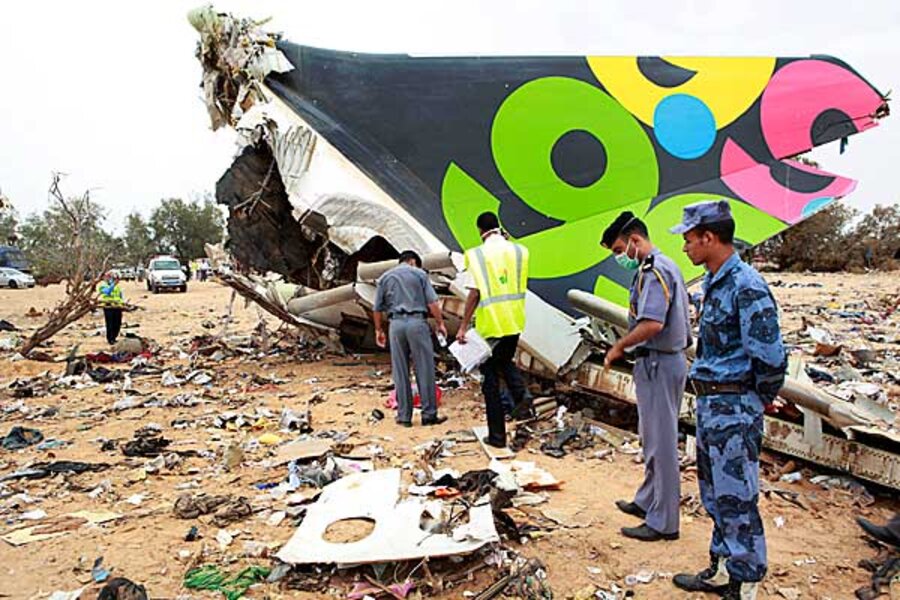Clues to the cause of the Libya plane crash
Loading...
| Johannesburg
A 10-year old Dutch boy was the sole survivor in Wednesday's crash of an Afriqiyah Airways Airbus A330-200 in Libya. The aircraft's black boxes - the flight data recorders - have been found, which should help investigators determine the cause of the crash.
An official report as to why the Airbus A330-200 came up short of the runway in Tripoli may be months away. But there are already clues to what might have happened in the photographs from the crash scene, says Bill Waldock, a professor of safety science and director of the Robertson Aeronautical Accident Investigation Laboratory at Embry-Riddle Aeronautical University in Prescott, Ariz.
“The wreckage looks a lot like the [1985] Delta L-1011 crash in Dallas-Fort Worth,” Mr. Waldock says. “The wreckage is scattered on both sides of slide path, suggesting a shallow angle of descent, about 3 to 4 degrees. There also isn’t a lot of fire damage from what I can see, which is what you would expect at the end of a flight.”
Also, the tail section is nearly intact, he adds, while the front of the plane was nearly disingegrated, something that occurs when a plane lands short of the runway. “If there was any fog, that could complicate things,” Waldock says. “Tripoli doesn’t have the best in the way of landing aids, so if you get fog it could obscure or even give the visual illusion that makes you think you are further away than you really are.”
Libyan authorities have already ruled out a terrorist attack.
One aviation blog, including comments from aviation professionals from around the world, also noted similarities to the Delta Flight 191 crash in 1985, as well as reports that the Afriqiyah Airways aircraft had made more than one pass at the runway. Another observed that landing on that particular runway at sunrise, the pilot may have had reduced visibility due to glare or a sandstorm:
"Word has it that they were on the RWY 09 approach, which is a non-precision NDB approach directly into the sunrise at that time. The METAR reports haze, (which may possibly be due to sandstorm activity). Under the circumstances they could have been in IMC conditions on final without glideslope guidance."
“An A330-200 is a sophisticated plane, but it is only as good as what is on the ground in terms of landing aids,” says Waldock.
How did the child survive?
A 13-year-old girl was the only survivor of a Yemeni Airbus 310 that crashed last June near the Comoros islands. With the young boy, now hospitalized but in stable condition in Tripoli, as the sole survivor of this crash, some are asking, "why did these children survive?"
Waldock says that each crash is different, but it’s possible that the mere fact of the child’s smaller size within an adult-sized seat may have protected the 10-year-old boy in the Afriqiyah Airways aircraft from the impact of the crash. “Often it’s simply because they’re a lot smaller and lighter, and if a seat separates from the plane and goes tumbling, he’s simply smaller” and more protected by the frame of the seat than an adult would be, he says.
RELATED STORIES:





